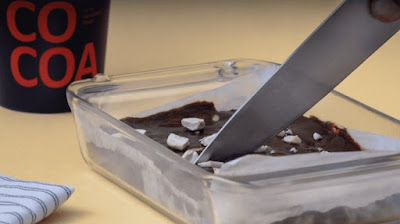4 Key Differences Between Mousse and Pudding
Here are the top 4 vital differences between a mousse and a pudding.
• Corn-starch is used to thicken the pudding.
The addition of corn-starch is among the fundamental differences between pudding and mousse. They contain a lot of elements that intersect, and the line between them can be a little blurry at times, though one thing remains constant. Corn-starch is not ever going to thicken a chocolate mousse cake.
For starters, corn-starch must be heated, which you don't do with mousse. Secondly, corn-starch provides a different kind of consistency to the mousse, which is not what it should be.
Mousse should be light and fluffy, therefore stiffening it with corn-starch would've been counterproductive. It would also be more difficult for the billions of air bubbles to support such a large amount of weight.
• Mousse is light and fluffy, and it has eggs in it.
Mousse is light and fluffy since it is made using eggs. It is possible to omit the eggs, but the outcome will be less fluffy and spectacular. The whipping of the egg whites and blending them with the remainder of the components that have already been formed into cream is a vital mechanism.
Egg yolks are frequently used in mousse to provide richness and flavour. Even if you didn't use eggs, you'd still require stuff to make it fluffy. To get it to hold its froth, you'd need to beat additional cream or aquafaba.
Pudding, on the other hand, maybe made fully without eggs, although it does taste nicer with them. Instant pudding mixtures do not require eggs to thicken; instead, corn-starch is used. However, if you would like to make your pudding, you'll need a lot of egg yolks, corn-starch or wheat, and a lot of skill and steady stirring.
Because eggs can readily boil, puddings cooked with eggs require extra care and attention. And if you only like to thicken with eggs, you'll need a whole chicken farm. We assure you you'll wind up adding corn-starch midway through.
• The pudding is done, but the mousse isn't.
Because the pudding contains corn-starch, it must be cooked for at minimum a couple of minutes to stiffen and finish cooking. The rest of the tastes are activated as a result, and you end up with a wonderful, coherent final product.
The egg whites are adjusted with some hot sugar syrup and we finish up with Italian meringue, which is not baked. It's a whipped egg white that's incredibly sturdy and silky, and it's also heated through without smelling like an omelette. Some are just plain French meringue that hasn't been tempered. It is very much dependent on the recipe.
• Mousse has always been eaten cold, whereas pudding can be served hot.
These two desserts are presented in distinct ways due to their different preparation methods. Mousse is made with French meringue and isn't baked all the way through. This probably requires to chill for a few hours before serving, so serve it chilled or practically frozen.
Pudding can be delivered hot, warm, at room temperature, or even frozen. Allowing it to chill improves its longevity, and you may even pipe some whipped cream on top.



Comments
Post a Comment